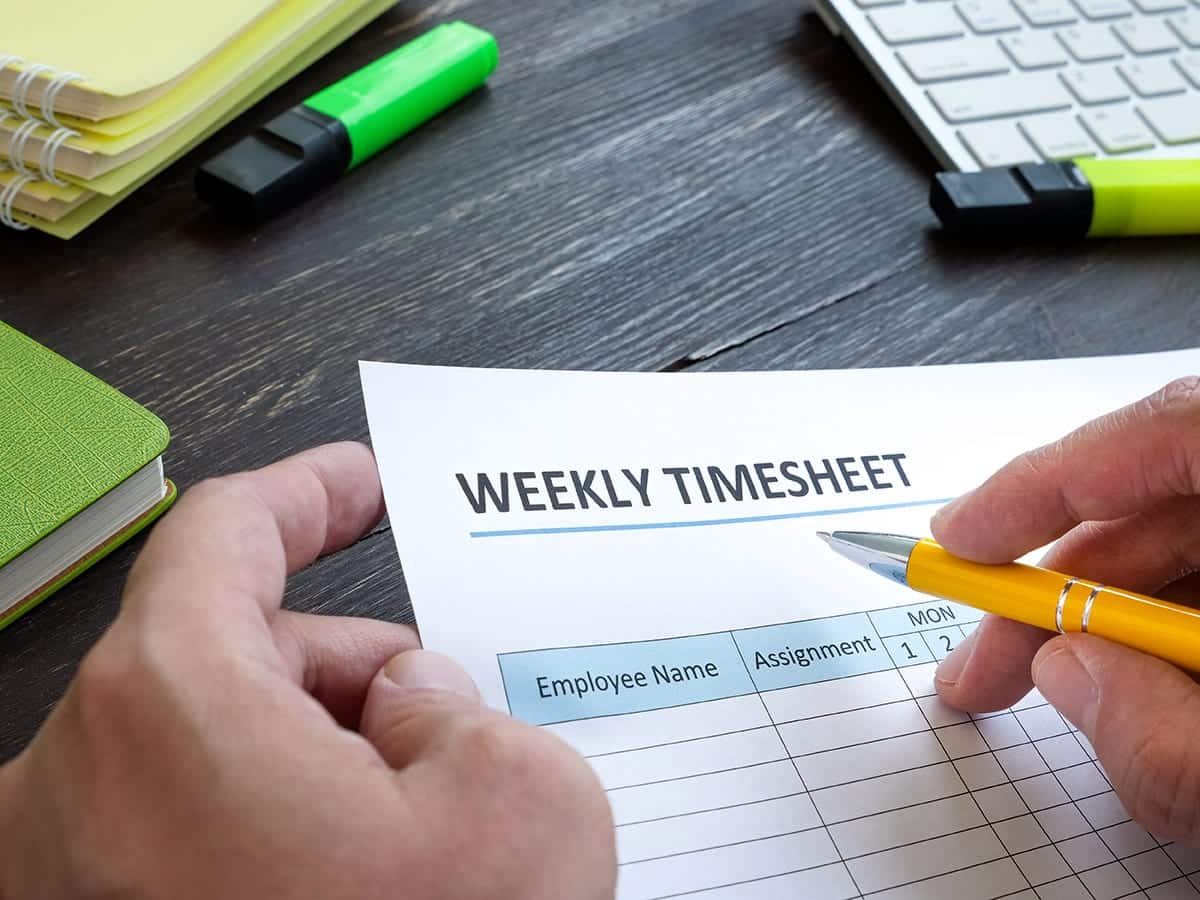Contactors don’t punch out until the punch list is knocked out. Your punch list is a document listing all final work items remaining before a construction project is complete. It provides a clear-cut rundown of every detail that doesn’t conform to the project contract. Completing a construction punch list isn’t just your legal and ethical responsibility. It’s essential for getting paid in full.
What Is a Punch List in Construction?
The simple punch list definition is that it’s an itemized list of every incomplete task that must be done before a project receives its final completion certificate. Clients have a right to withhold final payment until a punch list has been cleared.
In the construction world, the punch list is often referred to as a “snag” list. While the items on the list aren’t necessarily big-ticket items, they often represent tedious, troublesome, or detail-oriented work that needs to be taken care of before the project is contractually finished.
In most cases, punch list items are small fixes and tweaks. In other cases, they are ongoing issues that require final resolutions after being kicked down the road for months.
“The punch list could include things like incorrect installations (flooring, cabinetry), or incidental damage to existing finishes (floors), material and structure,” according to Homes.com.
In addition to providing a space for the general contractor (GC) to keep score of what’s left to be completed, the punch list unifies tasks assigned to all subcontractors under one grand list. As each final task is completed, the contractor clears it from the punch list.
The Importance of a Punch List in Construction
Why does a contractor need a punch list? A punch list creates organization and accountability. It can also reduce delays in final payment by ensuring a client isn’t presented with a project that doesn’t meet the standards of the construction contract. However, a punch list is much more than an organizational list.
Punch lists help contractors to produce better work. Here’s how:
- A unified punch list is a powerful, effective communication tool for contractors, subcontractors, architects, and site owners. Errors on the construction site often happen because stakeholders are working from different sets of directions.
- Contractors don’t just look at the punch list on the final day of construction. A punch list should be updated and reviewed constantly to allow contractors to address gaps with subcontractors “as they go” to shorten project deadlines.
- Fixing problems before a property is turned over to a client for inspection can reduce costs by avoiding the need to call back crews to redo work.
- Punch lists often help contractors to identify “red flag” patterns before small problems turn into big ones.
- Punch lists are important for quality control as the building process progresses.
- Punch lists prove clear progress measures to site owners throughout a project. This builds confidence in the contractor.
Punch Out Work in Construction
Some contractors assume that punch lists aren’t necessary because they’re not necessarily mandatory. Experienced contractors know that punch lists are mandatory if your goal is to build a reputation for quality.
Punch out work is intensely focused on quality control. When overseeing construction projects as a general contractor, it’s easy for smaller fixes to fall through the cracks. Tracking outstanding tasks from multiple subcontractors can also become challenging. A punch list provides a centralized guide for the dozens of “little tasks” that constantly get pushed to the side. In addition to keeping themselves accountable for finishing every detail, contractors can use punch lists to keep the people they’re paying accountable.
What Are Typical Punch List Items?
A typical punch list for any type of construction project will consist of “odds and ends.” It can cover minor details that weren’t completed, finished items that were damaged after completion, and finished items that were not completed to contract specifications. There are many great resources for how to craft a professional punch list as a general contractor. If you’re looking for a starting point, here’s a rundown of the core categories covered on a punch list checklist:
- Concrete.
- Masonry.
- Metals.
- Wood and plastic.
- Doors and windows.
- Finishes.
- Electrical.
- Mechanical.
- HVAC.
- Tiles.
- Flooring.
When creating your industry-specific punch list, each main category heading will consist of subheadings and lists detailing the specific tasks that need to be finished. It’s important to have a little flexibility with the format you use for managing a punch list because the shape of your list is simply going to look different for each project.
If you’re too rigid about using a generic industry template, you might not have a usable list that covers all of the contractual items for each individual client you take. Keep reading to learn about the tools contractors are using to make ultra-functional, workflow-enhancing punch lists that go way beyond the old clipboard.
First, it’s helpful to have a visualization of the types of items included on standard punch lists.
A Punch List Example for New Construction
New construction punch lists tend to be pretty universal unless you’re developing an ultra-custom home. A new construction checklist is generally broken down between items to test, items to add, items to fix, and items to carry away from the site. Yes, making sure that nothing is left behind for the site owner to deal with–so-called “substantial completion”–is an essential part of quality control for a contractor.
Below is a sample new construction punch list broken down by category.
Testing:
- Doors and windows.
- Cabinet drawers.
- Locks.
- Plumbing fixtures.
- Thermostat.
- HVAC performance and zoning.
- Appliances.
- Smart equipment.
- Mechanical elements.
- Internet.
- Phone.
- Cable/satellite.
Additions:
- Hardware for cabinetry and doors.
- Light-switch covers.
- Light fixtures.
- Final coats of paint.
- Sealants.
Repairs:
- Patching drywall damage.
- Repairing paint or texture issues.
- Fixing any improperly installed flooring tiles or planks.
- Touching up grouting.
- Correcting pavement cracks.
Removal:
- Trash.
- Bins.
- Construction tools and equipment.
- Taping and covers.
- Nails, screws, and scraps.
- Dust/debris from the home.
If you’re curious about what a punch list might look like for a renovation job, this video of a final punch list walkthrough for a rehab property is helpful.
The Construction Punch List Process
Where do you start with creating a punch list? The two stages of the punch list process are creation and execution. The good news is that the creation process is fairly simple and intuitive. In fact, punch list templates can help contractors to streamline the process of creating an executable punch list that benefits all stakeholders. More on that in a minute! Here’s how the construction punch list process should work.
- The general contractor’s project manager will perform a pre-inspection and create a construction punch list document.
- The project owner will perform a walkthrough and check the document for completeness.
- Any deficiencies will be corrected before final payment, the retainage, is released to the contractor.
The pivotal moment for a punch list is the walkthrough with project stakeholders. Led by the general contractor, a walkthrough should include the project owner, the architect, and key subcontractors.
This important fact-finding tour can serve as a springboard for reviewing the following:
- Any changes made that deviate from the original project.
- Any changes that need to be made for quality, congruence with unpredicted changes, or code requirements.
- Any parts of the home that require repairs or fixes.
Once all of the final punch list items are outlined, project stakeholders will develop a plan for managing the final tasks. The responsibility falls on the general contractor to provide a timeline for when all of the work will be completed. It may be necessary for the general contractor to reach out to subcontractors and employees to be able to create a singular timeline before committing to a deadline.
Finally, once all the punch list items are completed, the owner can release retainage.
Retainage is a percentage of money, usually 10% to 20% of the total project bid, that the owner withholds from a general contractor or until the work is completed. The purpose of retainage is to ensure that the contractor completes the work as agreed and that the owner does not have to pay for work that is not up to standard.
Who Is Responsible for the Punch List?
Responsibility for the punch list ultimately falls on the shoulders of the project manager. However, the items on the punch list are delegated to subcontractors and employees. In some cases, a general contractor may choose to simply address final touches that GC licensing permits them to complete as a way to expedite the process.
Here’s a glance at how all of the stakeholders in a project contribute to clearing out a punch list:
- General Contractor: The general contractor typically has ownership of the punch list. While a punch list is often created by the project owner, the GC will fully develop an executable punch list that categorizes and prioritizes tasks. The GC also creates a plan for giving subcontractors the time and resources to address all punch list items.
- Project Owner: The project owner is responsible for thoroughly assessing work against the specifications outlined in a construction contract. While a punch list should ideally be completed at the inception of a project, project owners can add line items to the existing list if they notice incomplete, inadequate, or “missed” items while inspecting the project. Many project owners cling tightly to punch lists to track project progress.
- Subcontractors: Subcontractors are responsible for completing work items that have been assigned to them from the punch list. In addition, subcontractors are obligated to provide progress and timeline updates to the contractor.
- Architects: A project architect contributes to the punch list by confirming that all designs were built to the project’s intended contractual specifications.
The dynamic of a punch list ultimately comes down to the fact that the project owner holds the general contractor responsible for getting all tasks completed based on the GCs contractual obligations.
Construction Punch List Best Practices
Some punch lists are more effective than others. General contractors can only benefit from investing time in perfecting the science behind their punch list methodologies. Take a look at some punch list best practices > to ensure that lingering issues don’t threaten your ability to be paid for a job.
1. Treat the Punch List as a Living Thing
Waiting until crunch time to finally think about a punch list creates a big headache for a contractor. A punch list should be viewed as a rolling checklist that evolves along with a project. The punch list should not be treated as a dreaded list of problems to address. It should be treated as a helpful barometer of a project’s position relative to the finish line.
When done properly, punch lists can actually be integral for creating workflows, setting project standards, and helping different subcontractors to work in harmony. In fact, making the punch list a feature of your daily check-in meeting with subcontractors can help to shape expectations for “taking care of things as you go” instead of cramming work in at the last possible deadline. This tactic will actually allow you to provide precise updates to the site owner.
2. Delegate Clearly
It’s easy for workers to pass the buck if a contractor isn’t clearly delegating tasks. Effective delegation is essential for clearing items from a punch list. An effective process should name the task, detail the work involved, name who is responsible for task completion, include a time estimate, and confirm a deadline.
3. Take Documentation Seriously
Contractors and project owners can sometimes have wildly different recollections regarding “agreed upon” details. This is where documentation becomes a tool that contractors can use to protect their interests. It’s important to document dates of “work completed” by signing off using a checklist system. However, photographic documentation is even more important.
Taking photographs of completed items as they are checked off of the punch list is important for verifying that you turned over a completed project according to the contract you’ve made with a project owner. In addition, documenting steps as you go may help to prevent the need to redo work if a project owner questions the integrity of the work based on “hunches” or “assumptions.”
As part of the workflow, workers can take and submit photographs of all completed tasks internally using your construction firm’s construction workforce management software.
4. Inspect Constantly
While subcontractors are the ones doing the daily work, you’re the one putting your name on the final product. You’re also the one with your name on the contract. These facts make routine inspections essential. A punch list inspection at specific intervals can be used to enforce quality measures in real time to fix issues in real time instead of waiting to catch up at the end.
5. Start With a Realistic Budget
Punch list items can eat into your profit on a project if you haven’t anticipated the cost for final touches. Accurate project costing enables you to provide customers with price quotes that leave you with a project margin above 15%. In a moment, you’ll learn more about how much is typically held back for punch lists.
6. Don’t Skip the Punch List Walkthrough
The punch list walkthrough with all project stakeholders is a vital part of ensuring that the project owner is satisfied. While a punch list inspection with the project owner may seem like a cause for anxiety, it’s actually a time to address any lingering issues that weren’t “caught” by your crews.
How Much Do You Hold Back for a Punch List?
Holding back payment for the punch list provides a project owner with leverage. While there is no hard-set rule about how much to hold back until all punch list items have been satisfied, the industry standard is for clients to hold back at least some percentage of the total payment. This is called punch list retainage.
The conventional advice that project owners are getting when they ask for guidance is to hold back roughly twice the dollar amount it costs to fix and finish all punch list items. For smaller jobs, the average project owner might hold back 5%. The retainage total often bumps up to 10% for larger jobs.
Contractors should plan financially for the fact that most clients will reduce each monthly payment submitted during the process to reflect the amount they’ve decided to hold back.
The Real Goal for Every Contractor: The Zero Punch List
Something called the “zero punch list” is the ultimate goal for contractors. With the right resources and approach, it is possible for contractors to routinely achieve a zero punch list.
As the name implies, a zero punch list is effectively an empty punch list that doesn’t require workers to go back to tweak any final touches. It means that you’re so effective at finishing tasks as the project progresses that there’s no need to do a “cleanup” list at the end.
When done properly, the zero punch list approach often allows contractors to finish projects under the deadline. That means getting paid sooner. It also means paying less for subcontractor labor costs to go back to redo work that’s left lingering on a punch list. These are the three tenets of a zero punch list:
- Doing error-free building the first time.
- Verifying that completed work meets contract specifications.
- Protecting work from damage.
If any deficiencies are detected, the team must stop in real time to evaluate, fix, and reinspect the work before moving forward.
Creating Punch Lists With a Template
Punch lists are nothing new. While punch lists have been a part of modern construction for quite some time, the way that contractors create and manage punch lists has been rapidly changing.
The term punch list actually refers to the process of punching holes in project lists to indicate which ones required fixing. In addition to being antiquated, the paper checklist punch list is hard to share, hard to keep track of, and hard to update in real time.
Contractors miss opportunities for collaboration and transparency when they stick to the old way of handling punch lists. These days, most contractors simply use printable templates to fill in items on punch lists. Most templates do a decent job of breaking tasks down by location at a home. However, they are essentially the technological equivalent of an Excel document.
Templates certainly outperform the old method of jotting down outstanding work items on a notepad. However, the template system isn’t as dynamic as it could be. One small tweak can turn punch lists from tedious to dynamic. That “tweak” is moving to a cloud-based app system.
Using Punch List Apps
Most larger construction and building firms have already made the leap to punch list apps that integrate into their workflow technology. Doing so creates incredible opportunities for saving time, saving money, and exceeding client expectations. Here’s how punch lists are making workflows better for contractors:
- No More Going Around in a Circle: When contractors and subcontractors constantly need to “refer to their notes” to discuss an ongoing issue, nothing gets done. There’s an excessive amount of repetition when all parties aren’t using unified technology to glance at the same checklist, documents, and notes. Punch list apps allow everyone to access the same information without the need to place a call for clarification.
- Better Accuracy: Punch list apps increase accuracy by building documentation and instructions into the punch list. A generic checklist template can only tell a person so much. Punch list apps offer options for attaching photos and notes that provide clear instructions for the task that needs to be completed. “Miscommunication” games are eliminated.
- Easier Planning for Subcontractors and Crew: Workers can check apps to see exactly what needs to be done by specific timelines. This enables them to schedule accordingly to ensure that their deadlines line up with the contractor’s deadlines.
- Updates in Real Time: Did the crew actually show up to complete the work today? With punch list apps, contractors can see work being checked as completed in real time.
- Better Reporting All Around: When subcontractors complete punch list items, they can produce records of each checked-off item by submitting photos. They can also submit daily progress reports to verify work completed for each day. Punch list apps also empower contractors to send photos of project progress to site owners to build relationships of confidence and transparency.
Contractors are staying on deadline by taking advantage of Workyard’s job scheduling app to create and track mobile punch lists with their teams. Providing the ability to assign tasks to employees using structured checklists of items to complete, Workyard lets you create an airtight punch list protocol that’s flexible enough for every kind of job you take on.
Yes, that means that you’re able to construct contract-specific punch lists instead of trying to shoehorn tasks into rigid, generic checklist rows.
Workers can complete tasks, check off items, and share photos and notes for completed work in the same ecosystem used for time clocks and GPS tracking. The best part is that punch lists integrate perfectly into job scheduling, job costing, and time tracking features that make Workyard the preferred construction workforce management software for thousands of contractors around the country.






